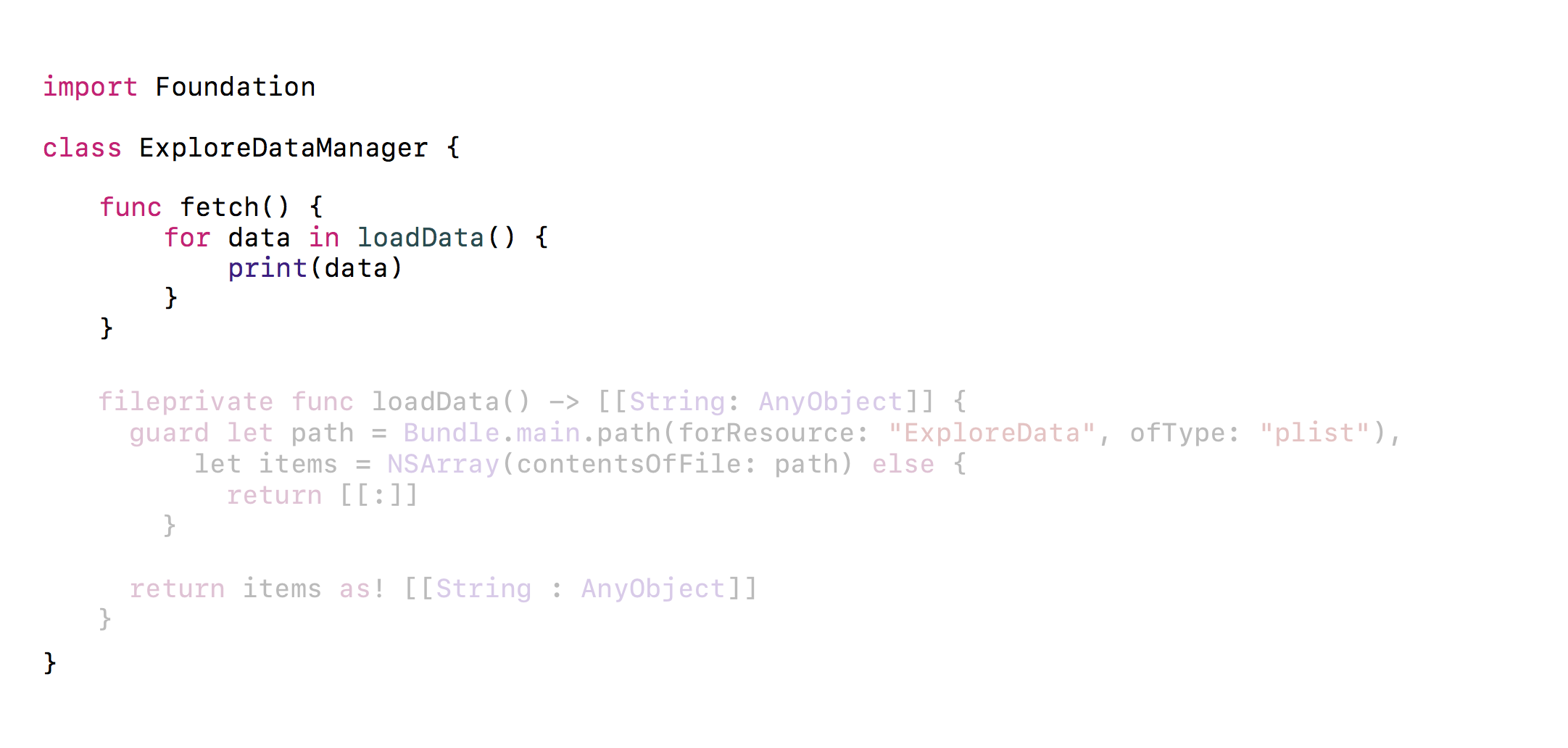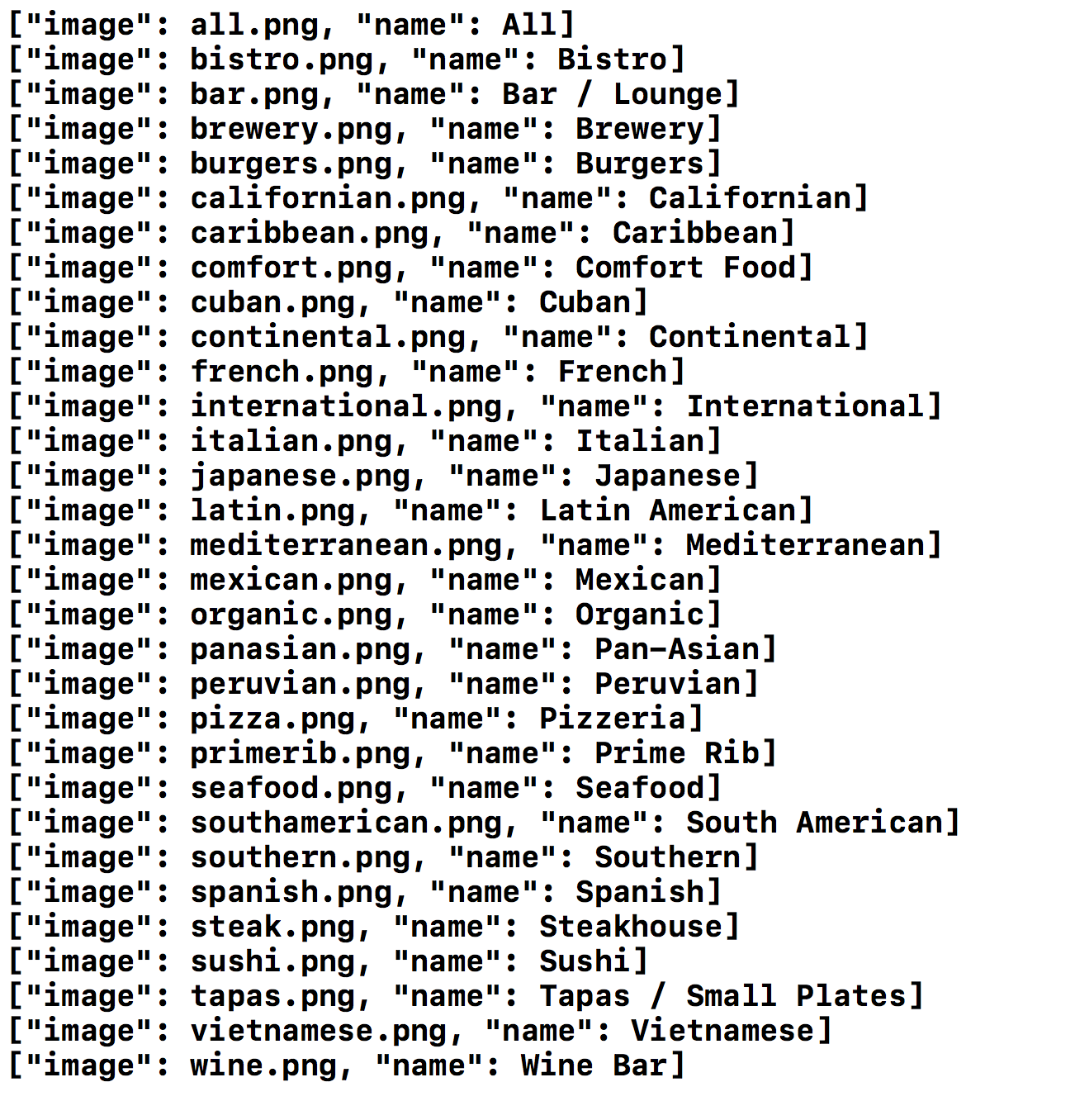To get our data out of the plist, add the following method above loadData() inside of our ExploreDataManager:
func fetch() {
for data in loadData() {
print(data)
}
}Our fetch() method is going to loop through our dictionary data from the plist. Here is what your file should look like now:

Inside of your ExploreViewController.swift file, delete the previous print statement that was inside of your viewDidLoad() and replace it with the following:
let manager = ExploreDataManager() manager.fetch()
Let's build and run the project by hitting the Play button (or use cmd+ R). You will notice that, in the Debug panel, every time our loop runs, it gives a dictionary object, such as the following:

This is exactly what we want.
Now, inside of ExploreDataManager, add the following directly above our fetch method:
fileprivate var items:[ExploreItem] = []
Next, inside of our fetch(), update our for...in loop by replacing print(data) with the following:
items.append(ExploreItem(dict: data))
Your...



